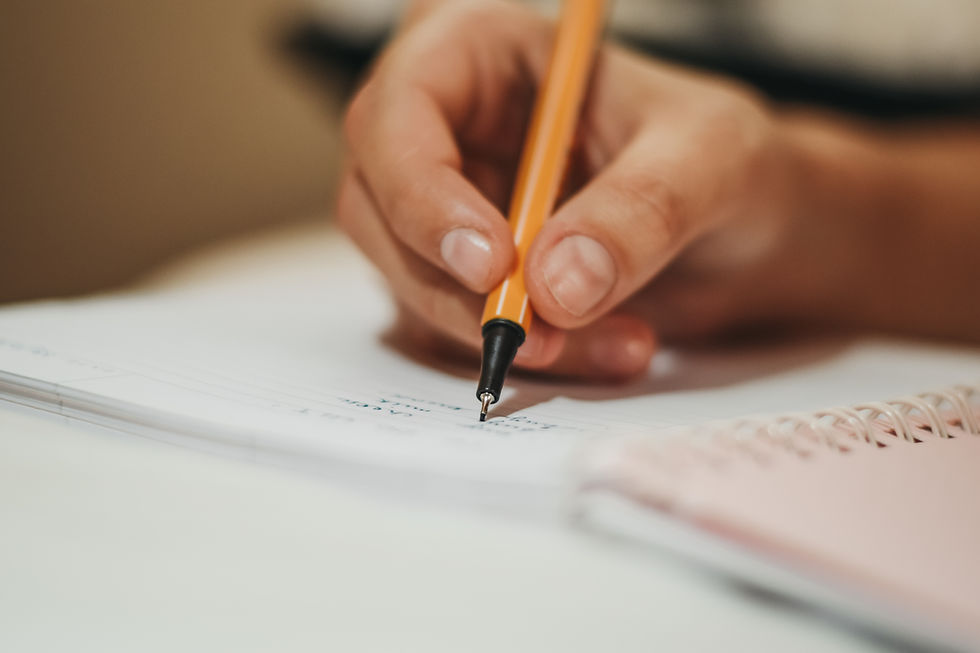Relaxation Techniques: Find Your Calm
- Debbie Airth

- Mar 12
- 4 min read
Updated: Jul 8

Welcome back to our Cultivating Inner Wellness:Mindful Growth series.
In our last post, we explored how stress lives in the body, not just as thoughts or tension, but as a full-bodied experience that can impact everything from digestion to mood. Today, we’re shifting from understanding stress to easing it.
While stress may be a part of life, feeling constantly overwhelmed doesn’t have to be.
This post is all about creating your relaxation toolkit, a gentle collection of practices you can turn to when your nervous system needs to exhale.
The Science of Relaxation: Why These Practices Work
When you feel anxious, tense, or overstimulated, your body is likely in sympathetic nervous system mode, better known as “fight or flight.” This response is helpful in short bursts, but when it’s always on, it can drain you physically and emotionally.
What you need in those moments is a bridge back to safety, and that’s where relaxation techniques come in.
These tools activate the parasympathetic nervous system, also known as “rest and digest.” It’s the part of your nervous system that slows your heart rate, calms your breathing, soothes digestion, and brings your body back into balance.
Let’s explore how some of the most accessible relaxation techniques support this shift, and how you can build a ritual of calm in your daily life.
Your Relaxation Toolkit: Techniques to Support the Whole You
🫁 1. The Power of Breath: Anchoring in the Present
Deep Belly Breathing (Diaphragmatic Breathing)
→ Place one hand on your chest, one on your belly.
→ Breathe slowly through your nose, allowing your belly to rise.
→ Exhale gently through your mouth.
✨ Why it works: This activates the vagus nerve, signalling to your brain that you are safe. It lowers cortisol levels, calms anxiety, and helps regulate your heart rate.
Box Breathing
→ Inhale for 4 seconds
→ Hold for 4 seconds
→ Exhale for 4 seconds
→ Hold for 4 seconds
✨ Why it works: This pattern helps stabilize the nervous system and restore emotional regulation.
🧘 2. Progressive Muscle Relaxation: Releasing Tension Stored in the Body
→ Find a quiet space.
→ Starting at your toes and moving upward, tense and release muscle groups one at a time.
→ Hold each contraction for 5–10 seconds, then fully let go.
✨ Why it works: Stress lives in the body. This technique helps you notice where tension hides and gives you permission to release it.
🌄 3. Guided Imagery & Visualization: Creating Inner Safety
→ Close your eyes and picture a calming scene, maybe the ocean, a forest, or a cozy place from your memory.
→ Use your senses: What do you see, smell, hear, or feel?
→ Stay here for a few minutes, letting your body settle.
✨ Why it works: Your brain responds to imagined calm the same way it does to real calm. Visualization can help the nervous system soften, especially when the outside world feels chaotic.
🧠 4. Meditation: Making Space for Stillness
→ Sit or lie comfortably. Focus on your breath, a mantra, or gentle sounds.
→ Let thoughts come and go, no judgment, no fixing.
→ If your mind wanders (it will), gently return to your breath.
✨ Why it works: Meditation strengthens the prefrontal cortex (your inner wise guide) and quiets the amygdala (your internal alarm bell). Over time, it builds emotional resilience and self-regulation.
🎨 5. Music & Art: Letting Expression Soothe You
Music
→ Create a calming playlist you can return to in stressful moments.
→ Try music without lyrics, binaural beats, or familiar songs that bring comfort.
Art
→ Try colouring, doodling, painting, or collaging.
→ Focus on the process, not the product.
✨ Why it works: Creative expression helps release pent-up emotion and stimulates feel-good brain chemicals like dopamine and serotonin.
Creating Your Own Ritual of Calm
You don’t need hours or a silent retreat. You just need small, intentional moments.
🕊️ Choose one technique that resonates with you
🕰️ Set aside 10 minutes in your day
📱 Add a reminder to your phone if needed
🌱 Repeat with compassion, not pressure
Let it be imperfect. Let it be yours. What matters most is that you’re showing up for yourself, even in small ways.
A Gentle Prompt for Reflection:
What does calm feel like in your body?
If you don’t know yet, that’s okay. You’re not alone. These practices are here to help you discover that feeling, slowly and safely, one breath at a time.
Resources
Here are a few resources to get you started. If something doesn’t feel like a good fit, explore other voices or formats, such as YouTube, apps like Insight Timer or Calm, or even books. The right practice is the one that feels right to you.
Deep Belly Breathing (Diaphragmatic Breathing)
Box Breathing:
Progressive Muscle Relaxation:
Guided Imagery:
Meditation:
Music:
Art:
What’s Next?
In Part 6, we’ll be wrapping up this mini-series on stress by helping you build a personalized self-care plan, something realistic, flexible, and rooted in who you are.
You don’t have to be calm all the time. You just need a way back to yourself when the waves get rough.
Let’s build that bridge together.



Comments